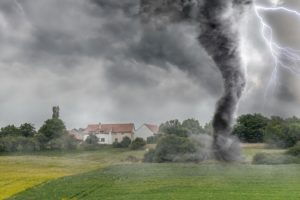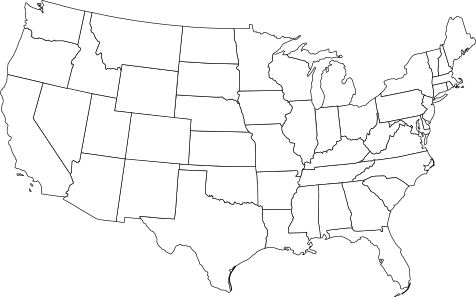When are you required to include a tornado safe room in your building plans? Tornado season is approaching for many parts of the country, which means that certain precautions may be necessary to protect residents, workers, and members of the public from storms and their dangerous effects.
A tornado safe room is one option for providing secure shelter during these violent storms. Generally, these structures can be part of nearly any building or facility, from residential homes and small businesses to large community centers. However, they’re most relevant, and sometimes even required, in public buildings that are there to provide emergency services.
If you’re currently developing building plans for a community center or other public or government-owned facility, especially if it’s located in an area where tornado threats are especially pertinent, you need to clearly understand what type of protection you’re required to provide. Here are some of the most important things to know about these shelters and the requirements surrounding them.
What Is a Tornado Safe Room?
Most people understand the general concept of a tornado safe room; it’s a place that provides shelter from extreme wind and debris during a major storm. However, in order to actually qualify as a FEMA safe room, there are several specific qualifications that need to be met. There are also different types of safe room designations, which impact the construction and testing requirements of each.
First of all, there are residential and small business safe rooms. These are generally smaller and aren’t usually required in specific buildings. They are just constructed when the residents or property owner want to include extra storm protection. Then there are community safe rooms, which are usually included in government facilities and buildings that provide emergency services to communities. This type of safe room is usually where actual building codes and requirements come into play.
Am I Required to Construct One?
According to the 2015 International Building Code, storm shelters are required within buildings that provide critical emergency operations, along with certain Group E occupancies that are located in areas with a design wind speed for tornadoes of at least 250 mph. Most often, the types of buildings this applies to include community or government buildings like emergency operations centers, 911 Call centers, police stations, community shelters, and schools.
When it comes to the areas of the country where these buildings may need to include safe rooms in their plans, the ICC provides a map of wind zones that outline the locations that are most at risk. Currently, the 250 mph wind zone encompasses a good deal of the middle of the country, including states in the Midwest, Southeast, and many of the Plains states. The zone stretches as far north as Minnesota and as far South as Texas.
Additionally, there are some local communities that have their own ordinances requiring safe rooms in certain types of new construction buildings. In general, these rules still mainly apply to government or community buildings, but it’s important to check the specific building codes in your area to make sure your project is compliant, even if the IBC doesn’t specifically require safe room construction.
In order to comply with the IBC rule, these storm shelters also must comply with ICC 500 standards. This code details a wide array of requirements for storm shelters, including administration and oversight, design criteria, occupancy, egress, access, fire protection, essential features, and testing methods.
Is Adding a Safe Room a Good Idea?
Even if you’re not required by the IBC to include a tornado safe room in your plans, it may be a good idea to do so. More specifically, FEMA recommends looking at a number of factors to determine whether or not a tornado safe room may be beneficial for a new building or facility. For example, the agency recommends evaluating the risk of tornadoes and/or hurricanes in your community, determining what existing refuge options are available if a tornado or hurricane occurs in your location, what level of safety you’re comfortable with, how feasible it would be to construct a safe room, and what the costs may be.
FEMA also notes several additional benefits that businesses and builders may want to consider when developing construction plans, aside from simply providing additional safety features. For example, the benefit-cost ratio may make it a worthwhile investment, or may even be required by a funding source. A safe room may allow businesses or communities to recover faster after an extreme weather event by protecting employees from injuries or fatalities. And there also may be insurance benefits associated with having a safe room at your location.
If including tornado windows and doors in your building plans are required, or if you think it may be beneficial to your project, Insulgard can help you get the materials you need. We offer a variety of materials designed to enhance safety in various facilities, including windows and doors that are approved for use in hurricane and tornado safe rooms. Our team can even help you choose the best options for your needs and connect you with glazing contractors who provide full installation services. In addition to tornado safe room windows and doors, we offer safety and security products like bullet resistant windows, forced windows, and secure entryway systems. Our products are tested to meet the most rigorous safety and protection standards in the industry. To discuss products related to tornado safe room construction or any other physical security options, reach out to our team today.


